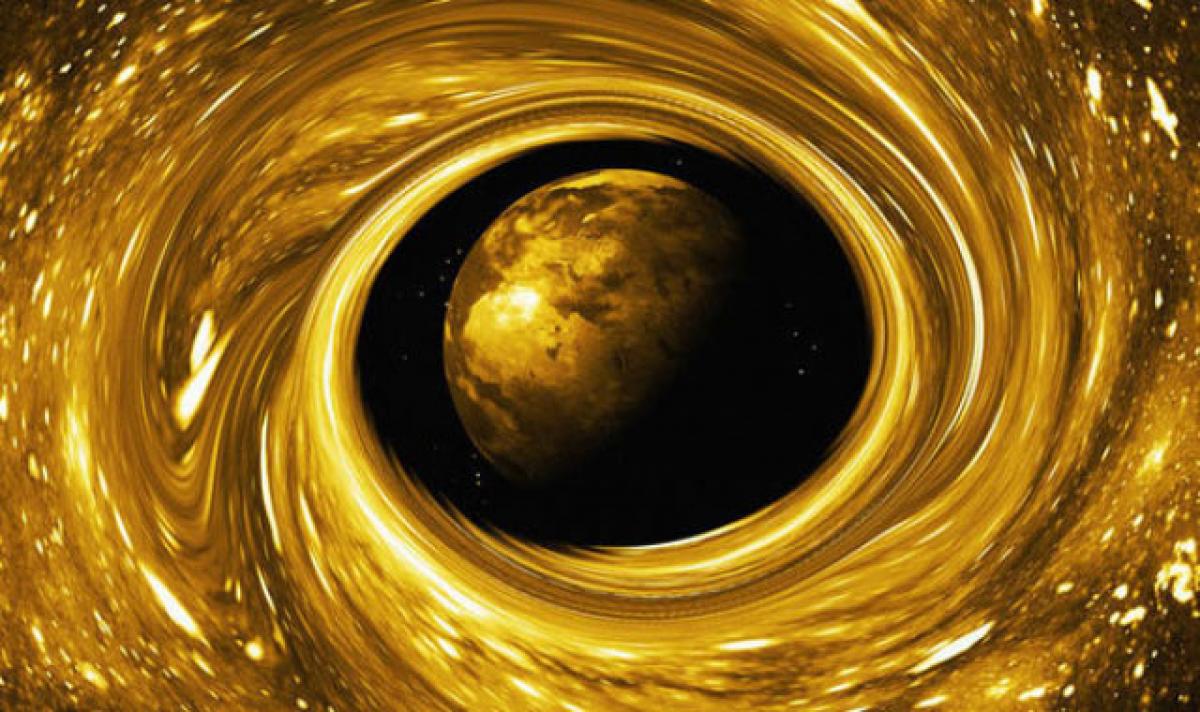Live
- Basavanagudi Kadalekai Parishe: Govt gives good news to groundnut traders
- Yanamala blames YSRCP policies for collapse of state economy
- Call to inculcate habit of reading books
- 63% parents give milk to their kids to maintain intake of calcium
- Maoist Leader Manjula Surrenders in Warangal, Receives ₹20 Lakh Reward
- Kartika Purnima celebrations fervour marks Telugu States, devotees flock to shiva shrines
- YSRCP alleges meagre fund allocations for Super Six schemes
- Telangana CM Reviews Plans for First Anniversary of State Government
- Vijayawada: Kindness Day celebrated
- Rajamahendravaram: Students advised to set clear goals
Just In

On January 4, an exquisitely sensitive instrument on Earth detected a disturbance that rippled through space and time.
On January 4, an exquisitely sensitive instrument on Earth detected a disturbance that rippled through space and time. Scientists traced the ripple 3 billion light-years away, back to two ancient black holes on a collision course.
This marked the third time in about a year that physicists, thanks to the Laser Interferometer Gravitational-wave Observatory, or LIGO, discovered gravitational waves from the violent death spirals of merging black holes.
The first gravitational wave discovery was announced in February 2016 and the second a few months later, according to Washington Post. The detection confirms that a new era in the investigation of the cosmos is now truly under way.
"The key thing to take away from this third, highly confident event is that we're really moving from novelty to new observational science a new astronomy of gravitational waves," said David Shoemaker, spokesperson for the LIGO Scientific Collaboration, writes BBC.
Once again, it is a merger of black holes, and once again the energy scales involved are extraordinary. The analysis suggests the two black holes that coalesced had starting masses that were just over 31 times and 19 times that of our Sun.
And when they finally came together, they produced a single object of a little under 49 solar masses. It means the unison radiated a simply colossal quantity of pure energy, adds BBC. Gravitational waves are 'ripples' in the fabric of space-time caused by some of the most violent and energetic processes in the Universe.
Albert Einstein predicted the existence of gravitational waves in 1916 in his general theory of relativity. Einstein's mathematics showed that massive accelerating objects (such as neutron stars or black holes orbiting each other) would disrupt space-time in such a way that 'waves' of distorted space would radiate from the source (like the movement of waves away from a stone thrown into a pond).
Furthermore, these ripples would travel at the speed of light through the Universe, carrying with them information about their cataclysmic origins, as well as invaluable clues to the nature of gravity itself.
The strongest gravitational waves are produced by catastrophic events such as colliding black holes, the collapse of stellar cores (supernovae), coalescing neutron stars or white dwarf stars, the slightly wobbly rotation of neutron stars that are not perfect spheres, and the remnants of gravitational radiation created by the birth of the Universe itself, according to www.ligo.caltech.edu.

© 2024 Hyderabad Media House Limited/The Hans India. All rights reserved. Powered by hocalwire.com







